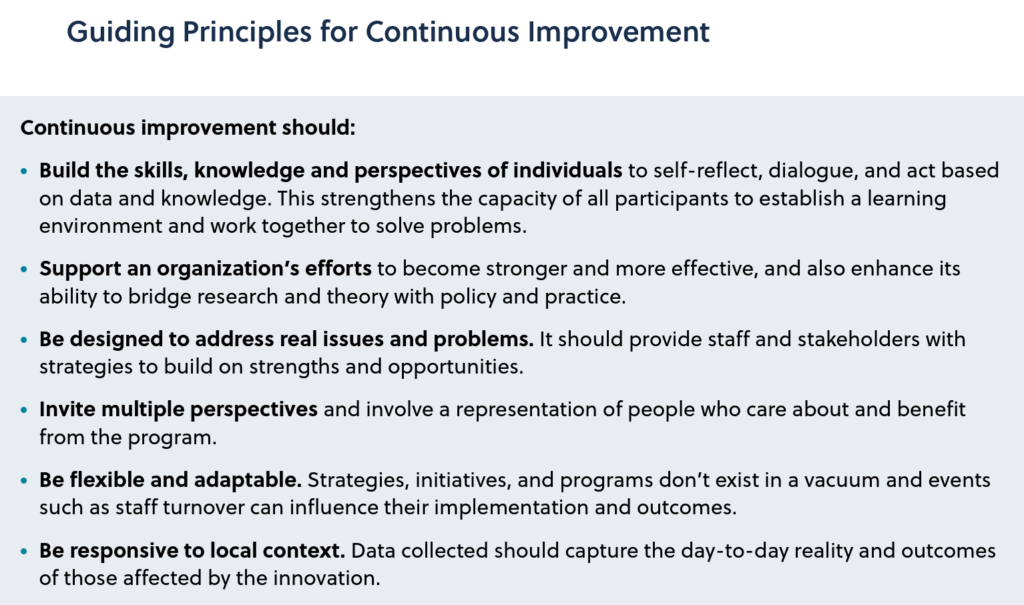
Building a Culture of Continuous Improvement Survey: Self-Assessment to Gauge Progress Toward Lasting Cultural Growth & Change
Small daily improvements over time lead to stunning results.
– Robin Sharma

INTRO
Assessing school/district culture and the readiness of all stakeholders to embrace a culture of continuous improvement is an important first step toward lasting and systemic change. You can implement this survey periodically to gauge progress toward cultural shifts that support school/district-wide change.
OBJECTIVES
- Implement this self-assessment survey to collect baseline data, and subsequently to gauge your progress along a continuum of growth for building a culture of continuous improvement.

SURVEY SCALE
1 – Not yet
2 – Sometimes
3 – Often
4 – Almost always
SURVEY PROMPTS
- Building leaders have a “continuous improvement” mindset, continually problem solving and challenging themselves to do things in more effective and efficient ways.
- Teachers have a “continuous improvement” mindset, continually engaging in inquiry and reflection and challenging themselves to do things in more effective and efficient ways.
- Teachers and administrators have a common understanding about formative data and routinely use as a process to improve practices, policies, structures, and programs.
- When a new improvement initiative is introduced, the reason for doing so is student-centered, aligned to the school’s improvement plan, and this connection is made explicit to the teachers and community members.
- Organized professional learning communities function at a high level where open sharing is facilitated. In these communities, people routinely share data and/or student work, as well as the strategies they are using to improve student learning.
- Organized professional learning communities are routinely focused on data to drive instructional changes resulting in positive outcomes for students.
- There are shared decision making processes and structures in place to make changes based on findings from continuous improvement data.
- Continuous improvement is used as an approach to address system alignment and cohesion of practices across grade levels and content areas (horizontal) and across vertical grades.
- The continuous improvement process is used to scale effective student-centered practices to achieve greater depth, quality, and rigor.
TIPS
- The survey form link above will direct you to make your own copy of our Google Form version of the self-assessment tool. Feel free to edit/adapt your copy to meet your needs.
- The complete self-assessment is on pages 17-20 of the attached PDF











Responses